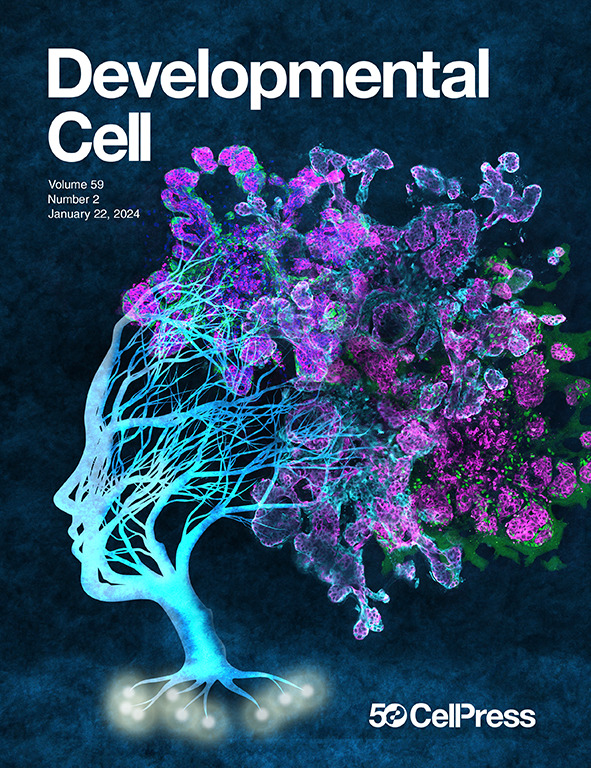TFEB在mTORC1抑制下触发三阴性乳腺癌细胞的基质降解和侵袭程序
IF 10.7
1区 生物学
Q1 CELL BIOLOGY
引用次数: 0
摘要
磷脂酰肌醇3-激酶(PI3K)/AKT/哺乳动物雷帕霉素靶点(mTOR)通路在与预后不良相关的三阴性乳腺癌(tnbc)中经常过度激活,是乳腺癌管理的治疗靶点。在这里,我们描述了通过敲低几个关键的mTORC1成分或在癌症治疗中使用mTOR抑制剂来抑制含mTOR复合物1 (mTORC1)的作用。mTORC1抑制导致细胞外基质蛋白水解降解增加10倍。在几种TNBC模型中,包括患者来源的异种移植物(PDXs),抑制诱导转录因子EB (TFEB)的核易位,其驱动控制内溶酶体功能和胞吐的转录程序。这一反应引发了内溶酶体循环的激增和膜1型基质金属蛋白酶(MT1-MMP)的表面暴露,与侵过性亢进有关。此外,在异种肿瘤移植模型中,抑制mTORC1导致基底样乳腺癌细胞表型和导管原位癌(DCIS)样组织的破坏。总之,我们的数据呼吁重新评估mTOR抑制剂在乳腺癌治疗中的作用。本文章由计算机程序翻译,如有差异,请以英文原文为准。

TFEB triggers a matrix degradation and invasion program in triple-negative breast cancer cells upon mTORC1 repression
The phosphatidylinositol 3-kinase (PI3K)/AKT/mammalian target of rapamycin (mTOR) pathway is frequently hyperactivated in triple-negative breast cancers (TNBCs) associated with poor prognosis and is a therapeutic target in breast cancer management. Here, we describe the effects of repression of mTOR-containing complex 1 (mTORC1) through knockdown of several key mTORC1 components or with mTOR inhibitors used in cancer therapy. mTORC1 repression results in an ∼10-fold increase in extracellular matrix proteolytic degradation. Repression in several TNBC models, including in patient-derived xenografts (PDXs), induces nuclear translocation of transcription factor EB (TFEB), which drives a transcriptional program that controls endolysosome function and exocytosis. This response triggers a surge in endolysosomal recycling and the surface exposure of membrane type 1 matrix metalloproteinase (MT1-MMP) associated with invadopodia hyperfunctionality. Furthermore, repression of mTORC1 results in a basal-like breast cancer cell phenotype and disruption of ductal carcinoma in situ (DCIS)-like organization in a tumor xenograft model. Altogether, our data call for revaluation of mTOR inhibitors in breast cancer therapy.
求助全文
通过发布文献求助,成功后即可免费获取论文全文。
去求助
来源期刊

Developmental cell
生物-发育生物学
CiteScore
18.90
自引率
1.70%
发文量
203
审稿时长
3-6 weeks
期刊介绍:
Developmental Cell, established in 2001, is a comprehensive journal that explores a wide range of topics in cell and developmental biology. Our publication encompasses work across various disciplines within biology, with a particular emphasis on investigating the intersections between cell biology, developmental biology, and other related fields. Our primary objective is to present research conducted through a cell biological perspective, addressing the essential mechanisms governing cell function, cellular interactions, and responses to the environment. Moreover, we focus on understanding the collective behavior of cells, culminating in the formation of tissues, organs, and whole organisms, while also investigating the consequences of any malfunctions in these intricate processes.
 求助内容:
求助内容: 应助结果提醒方式:
应助结果提醒方式:


